Trivia Browser
Platform: Nintendo GameCube
▲
6
▼

▲
5
▼
 The translation group RPGe's 1998 English translation of Final Fantasy V is considered to be one of the most widely-played and influential fan translations in video game history. It gained this reputation because it released before Squaresoft's first official translation in Final Fantasy Anthology in late 1999, and despite RPGe primarily consisting of inexperienced teenagers, it was regarded as a better translation than the official one, leading many Western players to first experience the game through it.
The translation group RPGe's 1998 English translation of Final Fantasy V is considered to be one of the most widely-played and influential fan translations in video game history. It gained this reputation because it released before Squaresoft's first official translation in Final Fantasy Anthology in late 1999, and despite RPGe primarily consisting of inexperienced teenagers, it was regarded as a better translation than the official one, leading many Western players to first experience the game through it.The first translation attempts stemmed from widespread confusion over Squaresoft not releasing three FF games in the West: Final Fantasy II, Final Fantasy III, and FFV. Their decision to release Final Fantasy VII internationally under its original numbering after Final Fantasy VI was released in the West a few years earlier as the "third" game in the series also contributed to this.
The co-creator of RPGe, named Shadow, was inspired by an incomplete FFII translation by users Demi and Som2freak (the latter having later lent Shadow tools to work on FFV), and started translating FFV by making flashcards for which hex code corresponded to each Japanese and English character in the game's data. He promoted his efforts online using photoshopped FFV images and recruited other users to create RPGe, including translator David Timko, and a computer engineering major named Hooie who also asked Japanese instructors at his university to help translate some enemy names. RPGe's plan was to directly edit their English script into the text files of a ROM of the Japanese version, but their work was slow and tedious due to them having little experience with fan translations and being out of touch with fledgling emulation communities. This lead to technical issues with their text and sprite editing software, and English characters being poorly displayed under conditions that were originally designed for larger Japanese characters. The group also suffered from internal factionalism, and since Shadow promoted himself as the public face of the project, he found that he could not handle the attention and controversy that came from how seriously he took the project and RPGe itself, seeing the translation effort as a vital service to the Squaresoft fan community. After Demi published a lengthy post parodying Shadow, he "snapped" and left RPGe. The co-founders of RPGe would also eventually step down, but other users would take over and start their own work.
A user named Myria, who had argued against RPGe's hex editing approach to no avail, split off from their efforts beforehand to work on a separate translation. Sharing similar setbacks to them, she gradually parsed through the code used to handle the text files, and edited it so it could recognize English characters of different sizes and fit more in a dialogue box. Som2freak helped translate the script for a time, but then left the project after bringing on a new editor, named harmony7, who started heavily revising Som2freak's translations to his chagrin despite seeing several issues with it.
One of the most controversial aspects of the translation was the main character's name. Squaresoft's later English translation named him "Bartz", but RPGe's translation named him "Butz", which many joked sounds like "butts". Myria claimed that Butz was the most accurate translation based on documents and official merchandise using it "the way we'd written it" (for reference, the Romanized version of the Japanese name "バッツ" comes out as "Battsu"). However, Butz is used in real life as an actual German surname with a different pronunciation, the vowel being an "oe" sound like in the English words "put" and "good". Therefore, Bartz would make more sense to match up with the vowels in the Japanese name than Butz, and also fits better as a German first name since Bartz is a pet name for Bartholomäus (Bartholomew).
The bulk of Myria's technical work ended in October 1997, with harmony7 still working to revise the entire script until something unexpected happened. An early version of the fan translation mysteriously appeared on a Geocities website with others taking credit for it. This prompted RPGe to release their work up to that point as "v0.96" on October 17, 1997, with the final patch eventually being released in June 1998. The translation patch received acclaim for its technical aspects and near-professional writing quality, and influenced other players to become translators, including Clyde Mandelin who would later create the English fan translation for Mother 3. Squaresoft never contacted RPGe about the translation, and while their 1999 localization of the game was seen as inferior to RPGe's, Myria would later opine that Square Enix's 2006 localization in Final Fantasy V: Advance was better than theirs. Myria continued hacking and reverse-engineering games and eventually earned a job at an undisclosed major video game company.
2017 Kotaku article:
https://web.archive.org/web/20170428183534/https://kotaku.com/how-three-kids-beat-the-odds-and-translated-final-fanta-1794628286
2021 IGN article:
https://web.archive.org/web/20210508152802/https://www.ign.com/articles/the-untold-drama-and-history-behind-final-fantasy-5s-fan-translation
Butz surname pronunciation:
https://en.wiktionary.org/wiki/Butz#Pronunciation_2
Bartz pet name source from Ancestry.com:
https://www.ancestry.com/name-origin?surname=bartz
Final Fantasy Chrome Figure Collection wiki articles:
https://finalfantasy.fandom.com/wiki/Final_Fantasy_Chrome_Figure_Collection
https://ffmerchandise.fandom.com/wiki/Final_Fantasy_Chrome_Figures_Collection
Ebay listing for Final Fantasy Chrome Figure set including Butz:
https://www.ebay.com/itm/275540207811
https://web.archive.org/web/20170428183534/https://kotaku.com/how-three-kids-beat-the-odds-and-translated-final-fanta-1794628286
2021 IGN article:
https://web.archive.org/web/20210508152802/https://www.ign.com/articles/the-untold-drama-and-history-behind-final-fantasy-5s-fan-translation
Butz surname pronunciation:
https://en.wiktionary.org/wiki/Butz#Pronunciation_2
Bartz pet name source from Ancestry.com:
https://www.ancestry.com/name-origin?surname=bartz
Final Fantasy Chrome Figure Collection wiki articles:
https://finalfantasy.fandom.com/wiki/Final_Fantasy_Chrome_Figure_Collection
https://ffmerchandise.fandom.com/wiki/Final_Fantasy_Chrome_Figures_Collection
Ebay listing for Final Fantasy Chrome Figure set including Butz:
https://www.ebay.com/itm/275540207811

▲
3
▼
Due to a programming error, the player has a random chance of accessing debug mode in Super Mario Bros. 3 (specifically the one from the NES version of the game, which is carried over to the Super Mario All-Stars port). The debug mode only activates if a value of 80 is stored at the RAM address 7E0160, which can be manually edited by a devkit.
The NES version initializes the equivalent RAM address to 00 whenever the game is turned on, preventing the player from encountering debug mode during the normal course of play. However, due to an oversight, this does not occur in the SNES version, resulting in Super Mario All-Stars reading whatever value is generated by the console itself. Because this value is randomized during bootup, this means that the game has a small chance of activating debug mode in Super Mario Bros. 3 on a retail unit. While the theoretical probability of this occurring is 1/256, it can vary depending on the console's build and the power grid that it is connected to.
The NES version initializes the equivalent RAM address to 00 whenever the game is turned on, preventing the player from encountering debug mode during the normal course of play. However, due to an oversight, this does not occur in the SNES version, resulting in Super Mario All-Stars reading whatever value is generated by the console itself. Because this value is randomized during bootup, this means that the game has a small chance of activating debug mode in Super Mario Bros. 3 on a retail unit. While the theoretical probability of this occurring is 1/256, it can vary depending on the console's build and the power grid that it is connected to.
The Cutting Room Floor articles:
https://tcrf.net/Super_Mario_All-Stars_(SNES)#Old_Debug_Mode
https://tcrf.net/Notes:Super_Mario_All-Stars
Supper Mario Broth video, the description of which includes an explanation for the oversight:
https://www.youtube.com/watch?v=AjiVoXiRo1M
https://tcrf.net/Super_Mario_All-Stars_(SNES)#Old_Debug_Mode
https://tcrf.net/Notes:Super_Mario_All-Stars
Supper Mario Broth video, the description of which includes an explanation for the oversight:
https://www.youtube.com/watch?v=AjiVoXiRo1M

▲
3
▼
Dan Arey, a former Crystal Dynamics and Naughty Dog developer who worked on the second and third games in the series, praised the first game in a 1996 Retro Gamer magazine interview. Prior to joining Naughty Dog, he talked about how the game maintained its unique identity in the world of 3D platformers, even when faced with the groundbreaking influence of Super Mario 64. Arey emphasized that while Super Mario 64 embraced open-ended levels, programmer Andy Gavin and director Jason Rubin designed Crash Bandicoot to adhere to a more old-school, level-based structure while adding 3D depth to its platforming challenges by "going down 3D roads with occasional 2D side-wave elements, but everything was very focussed in terms of mechanics". Arey also expressed admiration for the game's technical achievements even before he joined Naughty Dog, which likely soon motivated him to do so:
"We saw some early demos when I was at Crystal Dynamics, and we were asking ourselves how they were getting so many polygons on the PlayStation. What they had done was pre-calculate the polygons you couldn't see from a fixed-camera viewpoint, so it looked like there were many more polygons being pushed on the system than ever before."
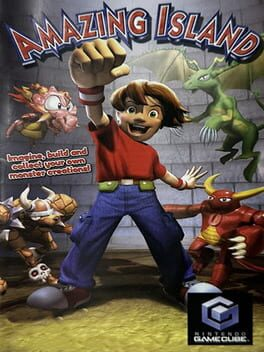
subdirectory_arrow_right Magic Pengel: The Quest for Color (Game)
▲
3
▼
"Teddy" is a 3D-modeling software that allows users to create 3D models by simply drawing freeform strokes, created by Takeo Igarashi. Along with being available on the Unity Asset Store and being part of the "Magical Sketch 3D" PC package, there are two video games that notably use the software: the GameCube game Amazing Island (as part of the game's monster creation system), and the PlayStation 2 game Magic Pengel: The Quest for Color (where it's used to create the game's Doodles).
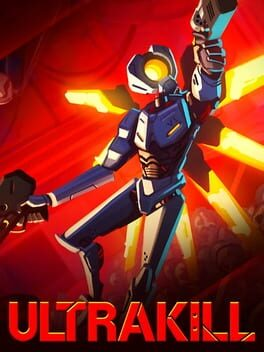
This trivia has been marked as "Not Safe for Work".
It may not be appropriate for all visitors and definitely isn't appropriate for work or school environments.
Click here to unhide it.
It may not be appropriate for all visitors and definitely isn't appropriate for work or school environments.
Click here to unhide it.
▲
3
▼
Tweet announcing UKButt:
https://twitter.com/ULTRAKILLGame/status/1600549517853704192
Dextero article:
https://www.dexerto.com/gaming/indie-fps-games-official-sex-update-adds-support-for-adult-toys-as-controllers-2015315/
PC Gamer article:
https://www.pcgamer.com/retro-shooter-ultrakill-now-has-official-sex-toy-support/
YouTube video about UKButt which goes over the "add sex to Ultrakill" meme:
https://www.youtube.com/watch?v=SIp7GPUR3Ak
https://twitter.com/ULTRAKILLGame/status/1600549517853704192
Dextero article:
https://www.dexerto.com/gaming/indie-fps-games-official-sex-update-adds-support-for-adult-toys-as-controllers-2015315/
PC Gamer article:
https://www.pcgamer.com/retro-shooter-ultrakill-now-has-official-sex-toy-support/
YouTube video about UKButt which goes over the "add sex to Ultrakill" meme:
https://www.youtube.com/watch?v=SIp7GPUR3Ak
Platform: Pokémon mini
▲
3
▼
The Pokémon Mini is the only Nintendo handheld to have a rumble motor stored inside the console itself, instead of through an accessory, removable controller, or unique game cartridge.
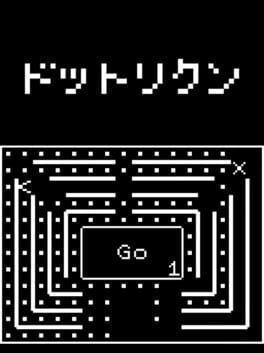
▲
3
▼
Dottori-Kun, a 1991 demake of Sega's 1979 maze game Head-On, was created not to be played, but rather as a legal loophole around Japan's Electrical Appliance and Material Control Law which claimed that all arcade machines must contain a game when sold. Dottori-Kun allowed Sega to sell generic Astro City arcade machines which the arcade owner could swap the contents of at their leisure, and included test features to ensure the machine worked properly before installing a proper game. The game did not support coin insertion, and therefore was not a viable option for arcades even if an owner believed there was an audience for its simplistic gameplay and graphics, leading to the board being scrapped most of the time.
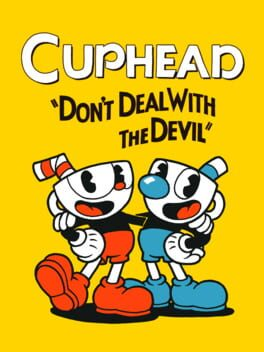
▲
2
▼
 In 2019, Studio MDHR and the multinational automotive company Tesla announced that a special port of Cuphead would be released for the Tesla Arcade digital store and would be playable on the company's Model S, Model X, and Model 3 vehicles. Due to storage limitations with the cars, the Tesla Arcade version only includes the stages in Inkwell Isle I. The game can only be played with a controller plugged into each vehicle's USB port, but can be played cooperatively with two players controlling Cuphead and Mugman. As part of the announcement, Studio MDHR released commemorative artwork of Cuphead and Mugman standing with a Model 3 car.
In 2019, Studio MDHR and the multinational automotive company Tesla announced that a special port of Cuphead would be released for the Tesla Arcade digital store and would be playable on the company's Model S, Model X, and Model 3 vehicles. Due to storage limitations with the cars, the Tesla Arcade version only includes the stages in Inkwell Isle I. The game can only be played with a controller plugged into each vehicle's USB port, but can be played cooperatively with two players controlling Cuphead and Mugman. As part of the announcement, Studio MDHR released commemorative artwork of Cuphead and Mugman standing with a Model 3 car.
Articles about Cuphead being added to Tesla cars:
https://gamerant.com/cuphead-tesla-vehicles/
https://www.ign.com/articles/2019/09/28/you-can-now-play-cuphead-on-your-tesla-car
https://www.eurogamer.net/you-can-now-play-cuphead-in-a-tesla
Studio MDHR and Tesla announcements:
https://twitter.com/StudioMDHR/status/1177305158470029314
https://www.tesla.com/blog/introducing-software-version-10-0
Playthrough:
https://www.youtube.com/watch?v=YQGKvVVEB2I
https://gamerant.com/cuphead-tesla-vehicles/
https://www.ign.com/articles/2019/09/28/you-can-now-play-cuphead-on-your-tesla-car
https://www.eurogamer.net/you-can-now-play-cuphead-in-a-tesla
Studio MDHR and Tesla announcements:
https://twitter.com/StudioMDHR/status/1177305158470029314
https://www.tesla.com/blog/introducing-software-version-10-0
Playthrough:
https://www.youtube.com/watch?v=YQGKvVVEB2I

▲
2
▼
Although CrazyBus is often discussed or reviewed as if it were a real video game sold for money, and included in ROM sets and pirated cartridges with authentic games, it was actually intended as a simple tech demo by a beginning developer posted on a Sega Genesis modding forum in 2004.

subdirectory_arrow_right Starglider (Collection)
▲
2
▼
Argonaut Software's Starglider games released in the 1980s, which were first-person combat flight simulators rendered with wireframe vector graphics, inspired them to come up with a prototype that would eventually lead to the creation of the first Star Fox. They created a prototype for the Nintendo Entertainment System codenamed as "NESGlider" that was based on the original game, utilizing a similar method to accelerate graphics to how the Super FX chip for the Super Nintendo Entertainment System later would. When they showed this prototype to Nintendo in 1990, they were instead advised to port and develop the game for the then-upcoming SNES. After Argonauts did that, Nintendo declared that this was the best 3D graphics the console could produce and that they hadn't designed the SNES with 3D games in mind. Argonaut staff suggested that if they wanted better, then they should let them design a 3D chip for them, and thus the Super FX chip was born.

▲
2
▼
Contary to popular belief and Nintendo's own statements, Star Fox 2 does not require the use of the Super FX Chip 2 to run, as the Super FX Chip 2 only increases game size capacity support and not graphical support, and Star Fox 2 is small enough to fit on a regular Super FX Chip. Star Fox 2, however, cannot run on a MARIO chip, the first revision of the first Super FX Chip which was succeeded by the more graphically powerful GSU-1 and GSU-2 versions of the Super FX Chip.
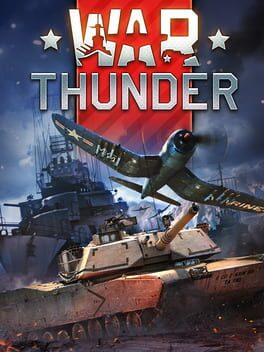
▲
2
▼
Starting in 2021, War Thunder's official forums became notorious for being the center point of multiple leaks of export-restricted or regionally classified military documents from around the world detailing how various weapons and transportation equipment like tanks and fighter jets are built. The leaks are attributed to the fact that the game strives to depict the minutiae of warfare as realistically as possible, leading to players with military connections, or access to resources that are publicly available in other regions, sharing the documents on the forums in order to prove points regarding what would or would not be accurate in-game. Despite the forum moderators quickly removing these posts and issuing multiple warnings about them breaching international law, the issue became so prominent and recurring that laypeople began spreading rumors that the United States military had to start filtering out War Thunder players during the recruitment process, which American weapons contractor RTX Corporation denied.
Full list of leaks from 2021-2023:
https://steamcommunity.com/sharedfiles/filedetails/?id=2924096000
AeroTime article about the leaks:
https://web.archive.org/web/20230117121047/https://www.aerotime.aero/articles/another-war-thunder-leak-player-reportedly-posts-restricted-f-16-documents
Axios article about the leaks:
https://www.axios.com/2023/04/20/pentagon-leak-war-thunder-discord
Sports Illustrated article with RTX Corporation's comments:
https://web.archive.org/web/20230124193915/https://videogames.si.com/news/war-thunder-national-security-risk
https://steamcommunity.com/sharedfiles/filedetails/?id=2924096000
AeroTime article about the leaks:
https://web.archive.org/web/20230117121047/https://www.aerotime.aero/articles/another-war-thunder-leak-player-reportedly-posts-restricted-f-16-documents
Axios article about the leaks:
https://www.axios.com/2023/04/20/pentagon-leak-war-thunder-discord
Sports Illustrated article with RTX Corporation's comments:
https://web.archive.org/web/20230124193915/https://videogames.si.com/news/war-thunder-national-security-risk
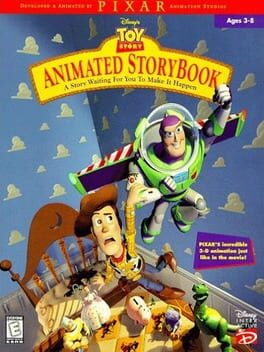
subdirectory_arrow_right Toy Story Activity Center (Game), Toy Story (Franchise), Pixar (Collection), Disney's Animated Storybook (Collection)
▲
2
▼
Disney's Animated Storybook: Toy Story and Toy Story Activity Center were developed by a devision of Pixar known as the Interactive Products Group, which exclusively made video game content. The division was closed down when the Toy Story 2 movie entered production, and merged into Pixar's main movie animation staff, as the animators behind the first film were working on A Bug's Life and the IPG had already proved itself by making as many frames of animation for their games as there was in the first Toy Story, with a near-identical quality. Due to the shuttering of the IPG, later Pixar PC games using pre-rendered graphics, such as A Bug's Life Activity Center and Monsters, Inc. Scream Team Training, would have significantly lower quality animation than the movies, and Toy Story would be the only Pixar film to have an Animated Storybook based on it.
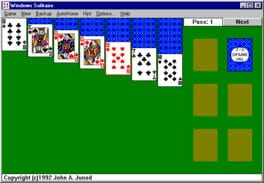
subdirectory_arrow_right PC (Microsoft Windows) (Platform)
▲
2
▼
Solitaire was included on Windows hardware to soothe users unfamiliar with computers by using something familiar that could also introduce them to the functions of a mouse.

subdirectory_arrow_right Stack-up (Game), Pinball (Game), Tennis (Game), Gyromite (Game), Hogan's Alley (Game), Wild Gunman (Game), Excitebike (Game), Golf (Game), 10-Yard Fight (Game), Ice Climber (Game), Clu Clu Land (Game), Baseball (Game), Kung Fu (Game), Wrecking Crew (Game), Nintendo Entertainment System (Platform), Family Computer (Platform)
▲
2
▼
Multiple early "black box" NES releases' cartridges produced during the console's US launch in Winter 1985 didn't use NES ROM chips, but rather Famicom ROM chips with a built-in converter. The 15 NES launch titles, and the only games known to have these chips, are:
•10-Yard Fight
•Baseball
•Clu Clu Land
•Duck Hunt
•Excitebike
•Golf
•Gyromite
•Hogan's Alley
•Ice Climber
•Kung Fu
•Pinball
•Stack-Up
•Tennis
•Wild Gunman
•Wrecking Crew
All of these games would eventually be reprinted with regular NES chips.
•10-Yard Fight
•Baseball
•Clu Clu Land
•Duck Hunt
•Excitebike
•Golf
•Gyromite
•Hogan's Alley
•Ice Climber
•Kung Fu
•Pinball
•Stack-Up
•Tennis
•Wild Gunman
•Wrecking Crew
All of these games would eventually be reprinted with regular NES chips.

▲
2
▼
When the PlayStation 2 was revealed in Japan, a demo was shown off of a fountain of spark particles. When this demo was shown to Jon Burton, founder of Traveller's Tales, he coded an identical tech demo for the first PlayStation as a joke. This tech demo would ultimately end up in the files of Toy Story 2: Buzz Lightyear to the Rescue!, unused, by accident.
Platform: Sega Mega Drive/Genesis
▲
2
▼
"Blast processing" is a marketing term coined by Sega of America to promote the Sega Genesis as the cooler and more powerful console compared to the SNES. It was such an effective campaign that it caused Nintendo to spend millions of dollars to ramp up their own smear campaign to rebut the claims, helping to create the textbook example of a "console war" between two rivaling video game companies through aggressive marketing and advertising. It is true that Blast processing as presented in advertisements at the time does not exist in any released Genesis game, but its creation was based on a real, low-level progressive processing method that ultimately went unused by developers.
The basic idea is that the hardware's video processor is "blasted" continuously, with the Genesis' 68000 processor working flat-out to change the color of every individual pixel during an active scan, a process where the "guns" on a CRT screen move from left to right and then down to the next line and so on. It was believed at the time that this function could be used to increase the Genesis' somewhat constrained color palette to showcase 256 color static images if timed right (this number would be exceeded by other developers like Jon Burton from Traveller's Tales who later discovered the trick).
Sega of America Senior Producer Scott Bayless claimed that Sega technical director Marty Franz first discovered the trick by "hooking the scan line interrupt and firing off a DMA [direct memory access] at just the right time", as firing it off at the wrong time would result in the scan lines appearing out of phase. This timing/synchronization issue, on top of the more pressing issue of the feature using all of the 68000's CPU time (meaning that while you could run the feature, you couldn't actually play the games that use it), effectively made it useless for cartridge games, and no shipped Genesis games ever used the feature. It’s speculated that it could have been used for Sega CD games, as the add-on had its own CPU that could run the feature, but this also did not come to pass.
The people responsible for the name "Blast processing" are Bayless and Sega of America's PR team. They interviewed him about the specs of the console, and he described to them how the feature could "blast data into the DAC's [digital-to-audio converters]". When talking about how the name came about, he assumed the PR team just liked the word "blast" without understanding what Bayless was explaining, and Blast processing was invented by them to more easily and vaguely sum up the technical capabilities of the Genesis when marketing it. Bayless later expressed reservations about the phrase, calling it "ghastly".
It should also be noted that this feature was not exclusive to the Genesis. In 2020, former Sculptured Software programmer Jeff Peters claimed that they discovered a similar technical trick on the SNES before Sega started using the phrase, but it was focused on audio rather than graphics. He claims that when porting Mortal Kombat to the SNES, Sculptured Software encountered an issue where the amount of graphics data being put onto the cartridge meant that sound had to be cut back drastically. To overcome this problem, Peters and his team used a homegrown system which allowed them to read sounds from the cartridge one at a time and blast them directly to a buffer in the sound memory. While the two tricks were achieving different things, it's interesting to note that both were possible on either console, despite Sega's insistence that only the Genesis could achieve Blast processing.
The basic idea is that the hardware's video processor is "blasted" continuously, with the Genesis' 68000 processor working flat-out to change the color of every individual pixel during an active scan, a process where the "guns" on a CRT screen move from left to right and then down to the next line and so on. It was believed at the time that this function could be used to increase the Genesis' somewhat constrained color palette to showcase 256 color static images if timed right (this number would be exceeded by other developers like Jon Burton from Traveller's Tales who later discovered the trick).
Sega of America Senior Producer Scott Bayless claimed that Sega technical director Marty Franz first discovered the trick by "hooking the scan line interrupt and firing off a DMA [direct memory access] at just the right time", as firing it off at the wrong time would result in the scan lines appearing out of phase. This timing/synchronization issue, on top of the more pressing issue of the feature using all of the 68000's CPU time (meaning that while you could run the feature, you couldn't actually play the games that use it), effectively made it useless for cartridge games, and no shipped Genesis games ever used the feature. It’s speculated that it could have been used for Sega CD games, as the add-on had its own CPU that could run the feature, but this also did not come to pass.
The people responsible for the name "Blast processing" are Bayless and Sega of America's PR team. They interviewed him about the specs of the console, and he described to them how the feature could "blast data into the DAC's [digital-to-audio converters]". When talking about how the name came about, he assumed the PR team just liked the word "blast" without understanding what Bayless was explaining, and Blast processing was invented by them to more easily and vaguely sum up the technical capabilities of the Genesis when marketing it. Bayless later expressed reservations about the phrase, calling it "ghastly".
It should also be noted that this feature was not exclusive to the Genesis. In 2020, former Sculptured Software programmer Jeff Peters claimed that they discovered a similar technical trick on the SNES before Sega started using the phrase, but it was focused on audio rather than graphics. He claims that when porting Mortal Kombat to the SNES, Sculptured Software encountered an issue where the amount of graphics data being put onto the cartridge meant that sound had to be cut back drastically. To overcome this problem, Peters and his team used a homegrown system which allowed them to read sounds from the cartridge one at a time and blast them directly to a buffer in the sound memory. While the two tricks were achieving different things, it's interesting to note that both were possible on either console, despite Sega's insistence that only the Genesis could achieve Blast processing.
https://www.eurogamer.net/digitalfoundry-2019-blast-processing-retro-analysis
https://www.youtube.com/watch?v=o8qgArSqMsc
https://www.timeextension.com/news/2022/09/the-man-behind-segas-blast-processing-gimmick-is-sorry-for-creating-that-ghastly-phrase
https://www.nintendolife.com/news/2020/05/segas_blast_processing_we_did_it_on_the_snes_first_says_former_sculptured_software_dev
https://www.youtube.com/watch?v=o8qgArSqMsc
https://www.timeextension.com/news/2022/09/the-man-behind-segas-blast-processing-gimmick-is-sorry-for-creating-that-ghastly-phrase
https://www.nintendolife.com/news/2020/05/segas_blast_processing_we_did_it_on_the_snes_first_says_former_sculptured_software_dev
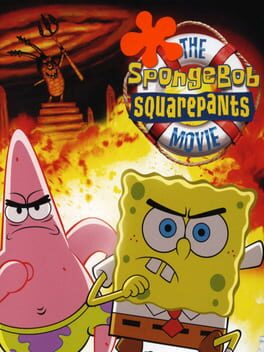
▲
1
▼
In 2012, The SpongeBob SquarePants Movie was ported to the PlayStation 3's PlayStation Network under the PlayStation 2 Classics line. However, it was taken down shortly afterwards with no official explanation. Audiences quickly inferred that the port's withdrawal was due to the poor reception it drew thanks to various emulation issues involved with it, though it may have also been due to THQ going bankrupt and Activision acquiring the license to make games based on Nickelodeon properties around the same time. Among these emulation issues, the 16:9 display (which was the default option) stretched the game rather than properly re-rendering it at a higher aspect ratio, the audio for in-engine cutscenes frequently stuttered and fell behind by up to a second, certain textures were noticeably blurry due to the game being displayed at a higher resolution than what it was designed for, and gameplay suffered from prominent input lag compared to the original release.
DidYouKnowGaming video:
https://www.youtube.com/watch?v=4CJoYsBRwrI
The Cutting Room Floor article:
https://tcrf.net/The_SpongeBob_SquarePants_Movie_(GameCube,_PlayStation_2,_Xbox)#PlayStation_3_Port
https://www.youtube.com/watch?v=4CJoYsBRwrI
The Cutting Room Floor article:
https://tcrf.net/The_SpongeBob_SquarePants_Movie_(GameCube,_PlayStation_2,_Xbox)#PlayStation_3_Port
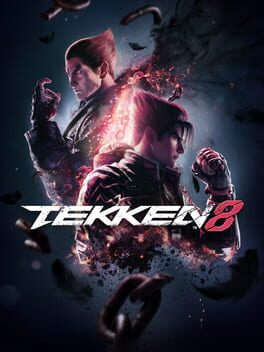
▲
1
▼
In an interview with the game's producer Katsuhiro Harada published in IGN on September 15th, 2022, Harada was asked about his experience developing a game in Unreal Engine 5 for the first time and some of the more subtle aspects of working with the engine. He responded:
"It's a very difficult question. From a developer's perspective, not just for us, but developers in general in the industry, it's different from the end users' impression, where kind of like an iPhone 4 was being used up until a certain date and then, "Okay, now the iPhone 5 is out, it's awesome, it's brand new, everything works so much better." That's kind of the impression that your average user has when this new Unreal Engine 5 comes out. But in reality, it's not that case at all. It's like it's a continuing process. Obviously, we didn't just start developing a game on UE5. UE5 was announced quite some time ago, but we haven't seen games for it yet.
So we started on UE4 and gradually started porting certain elements of the game over into UE5 and also confirming the results. Like, "Okay, oh wow, the graphic level on this particular area improved greatly." And then other areas as well – the things that are important for a fighting game: the response time…those kind of things are stuff that we've been porting out into the game and then figuring out what to expect in that area as well. And we’ve been working closely with Epic to figure out how to optimize some of those processes for input. So we're just starting and it's going to continue from now on."
So we started on UE4 and gradually started porting certain elements of the game over into UE5 and also confirming the results. Like, "Okay, oh wow, the graphic level on this particular area improved greatly." And then other areas as well – the things that are important for a fighting game: the response time…those kind of things are stuff that we've been porting out into the game and then figuring out what to expect in that area as well. And we’ve been working closely with Epic to figure out how to optimize some of those processes for input. So we're just starting and it's going to continue from now on."
| keyboard_double_arrow_leftFirst keyboard_arrow_leftPrev | Page 1 of 3 | Nextkeyboard_arrow_right Lastkeyboard_double_arrow_right |
